2023 AAAR Aerosol Art Competition: Microscopic Scale
Below are the finalists for the 2023 AAAR Aerosol Fine Art Competition: Microscopic Scale. Please vote by casting your paper ballots (included in your AAAR registration package) at the membership booth! You can vote for your favorite entry in three categories:
- Video
- Art: Microscopic Scale
- Art: Non-Microscopic (Larger) Scale
Entries for the Non-Microscopic (Larger) Scale as well as the Videos can be viewed via the navigation bar at the top of the page.
Entry ID #1: Breathe in…Breathe out.
Jianghan Tian (University of Bristol)
This image shows single aerosol droplets of different compositions drying. These particles are made up of sodium chloride, sodium bicarbonate, and proteins, which commonly exist in the respiratory fluid and are responsible for airborne transmission. I study how aerosols behave when being exhaled/inhaled from a respiratory disease transmission context. For example, how a particle looks could provide information for why the virus survives longer in certain environments and help us understand the reason. This research will help improve our understanding of airborne disease transmission such as COVID-19.
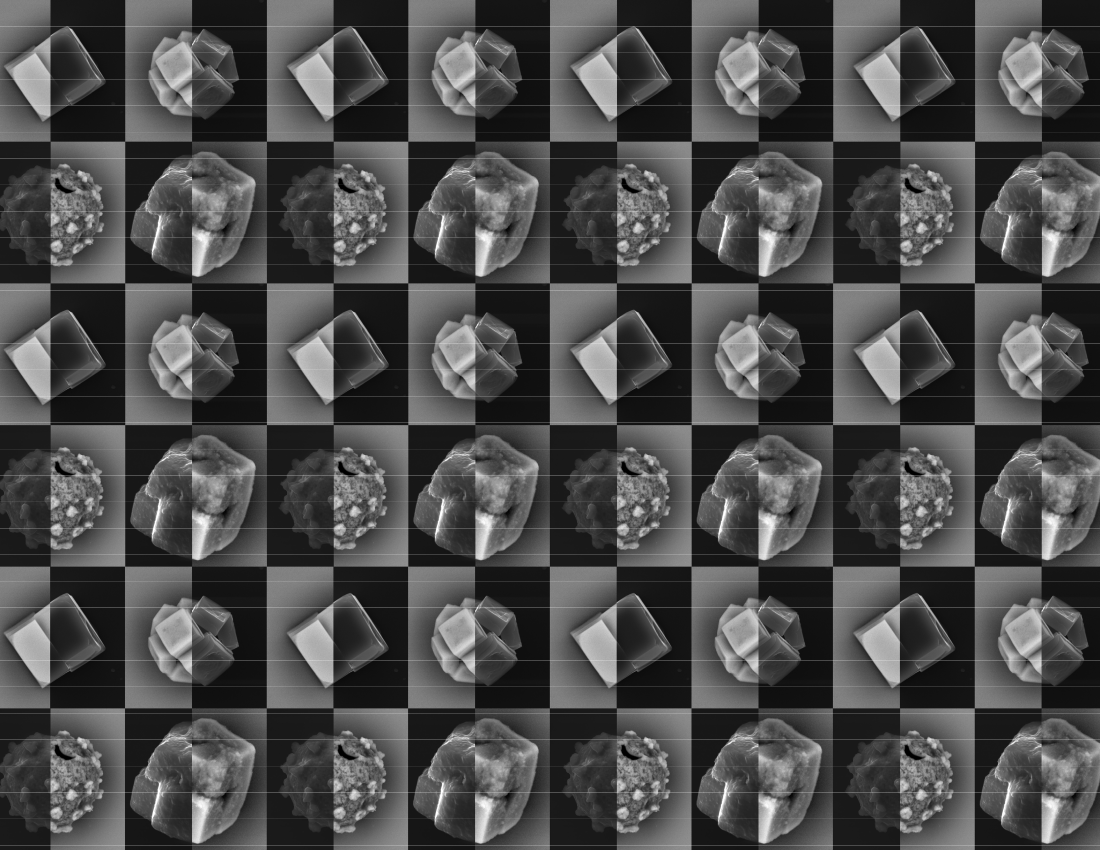
Entry ID #6: What’s Lurking in Your Dust?
Satya S. Patra (Purdue University), An Dang (University of Maryland, Baltimore County), Nusrat Jung (Purdue University), and Brandon E. Boor (Purdue University)
What’s lurking in your house dust? Our single particle imaging reveals a diverse mixture of skin fragments, pet dander, mites, insects, fibers, soil, and road dust.

Entry ID #13: The Wonderful World of IEPOX-SOA
Katherine Kolozsvari (University of Michigan); Jason Surratt (University of North Carolina at Chapel Hill); and Andrew Ault (University of Michigan)
This AFM image captures the topography of submicron particles, or perhaps the surface of a rocky exoplanet!

Entry ID #14: Lava Lamp
Dewansh Rastogi (University of Maryland College Park)
Image of Vulcan Black Carbon aerosols deposited onto lacey carbon coated TEM grid.

Entry ID #15: Nano-Size Kidney
Dewansh Rastogi (University of Maryland College Park)
Image of partially dried uric acid aerosols observed using a TEM.

Entry ID #16: Lettuce See
Dewansh Rastogi (University of Maryland College Park)
Image of Teri Phthalic Acid aerosol after a humidification and drying cycle during Vapor Phase TEM.
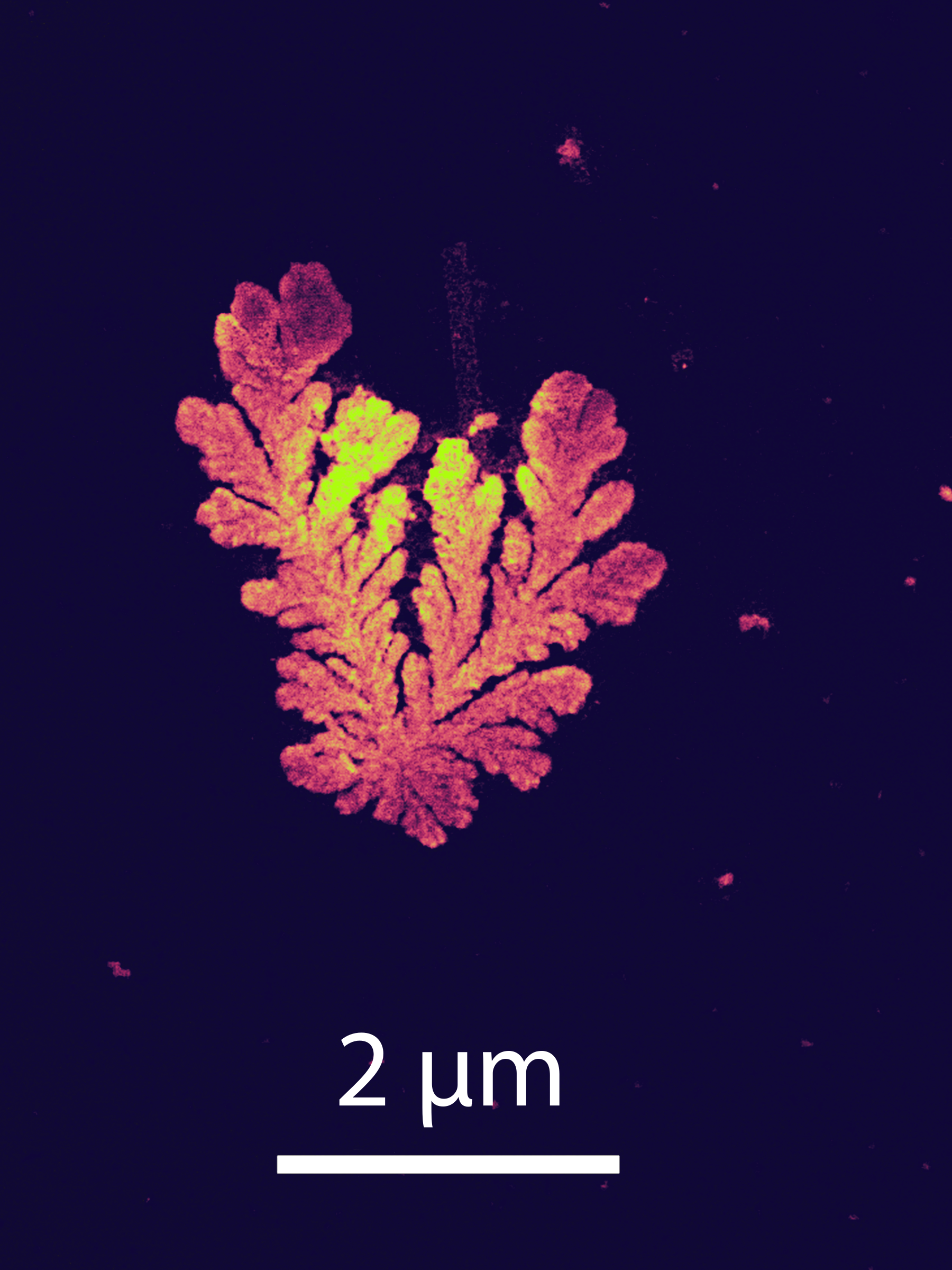
Entry ID #17: Microbars: Carbon-Polymer Composite Material Printed with Concentration Gradient Using In-House Developed Novel Aerosol-Based 3D Printing (A3DP) Technology
Shalinee Kavadiya (University of Miami); Pratim Biswas (University of Miami)
This is a composite material of 2D graphene oxide and polymer printed with concentration gradient using our in-house developed novel Aerosol-based 3D Printing Technology.

Entry ID #19: The Universe of CuONPs (on Lung Cells)
Sripriya Nannu Shankar (University of Florida & University of Cincinnati) and Chang-Yu Wu (University of Florida & University of Miami)
B&W images of CuONPs deposited as spot (1), ring (2), slit (3) circle (4) on lung cells (5), through the DAVID (Dosimetric Aerosol in Vitro Inhalation Device) are overlaid. For details, visit poster 2HA.19.
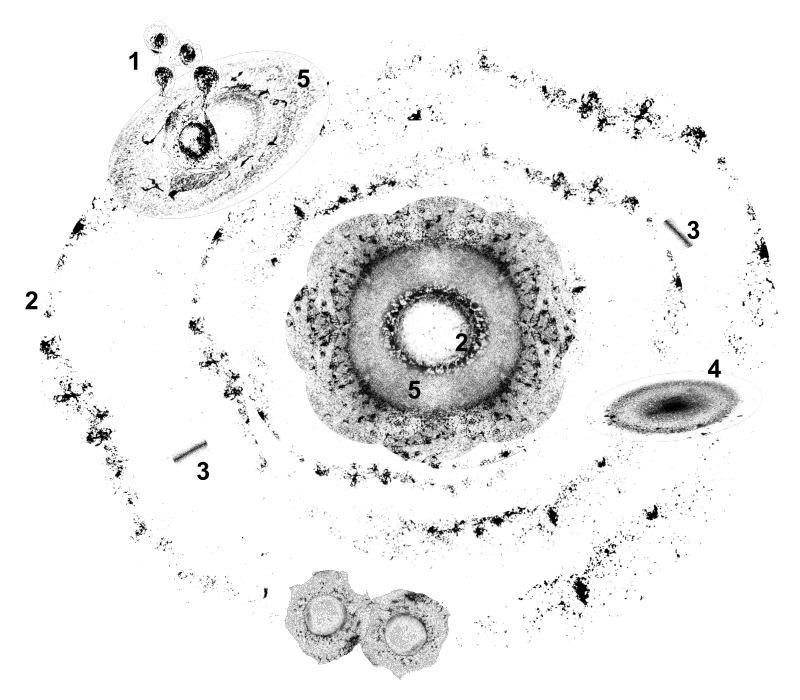
Entry ID #21: Plasmonic Magnesium at a Black Tie Event
Cyprien Jourdain (University of Cambridge), Kelvin Risby (University of Cambridge), Adam Boies (University of Cambridge)
Magnesium particles are of great interest, especially for their plasmonic properties enhanced by sharp edge morphologies, such as the bow tie structure visible in this microscopy image. This sample results from the high-throughput synthesis of magnesium nanoparticles in the aerosol phase, at high temperature in an inert atmosphere.
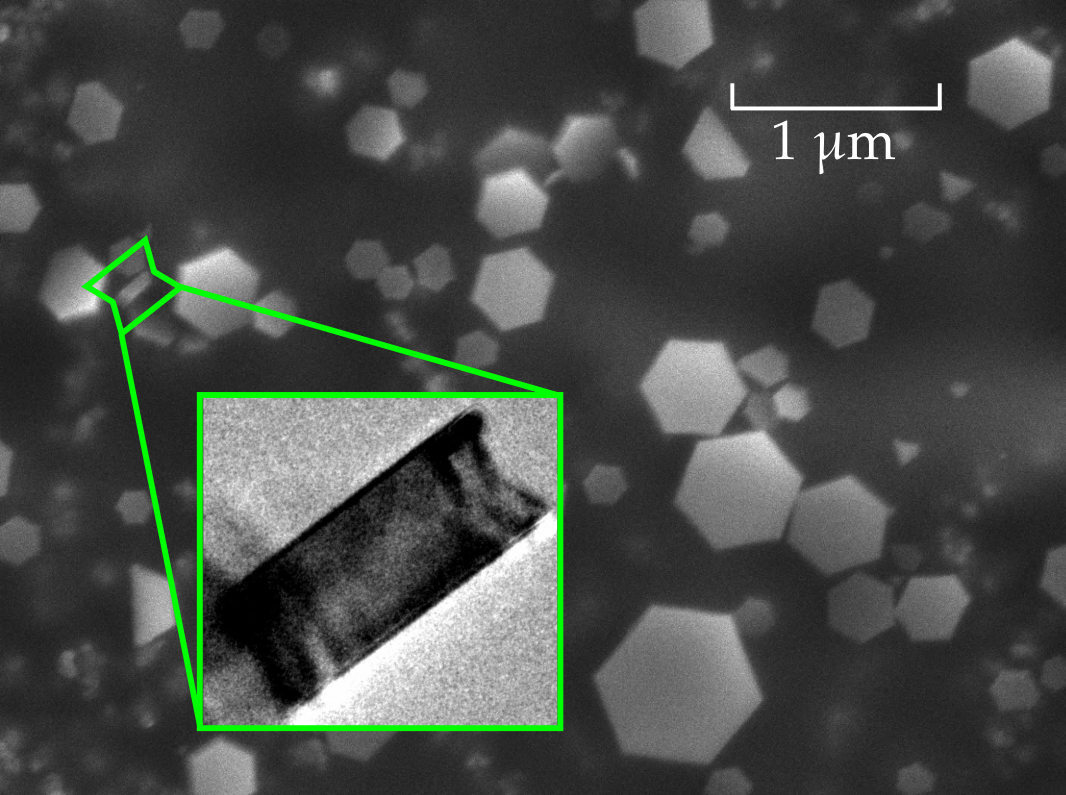
Entry ID #23: Dust Deposited Along Filter Sheet
Alok Kumar Thakur (Indian Institute of Technology, Gandhinagar)
Clean canvas meets dusted layers in our microscopic image.

Entry ID #26: Soot safari in TEM
Anusmita Das (Helmholtz Zentrum Munich), Svenja Offer (Helmholtz Zentrum Munich), Arunas Mesceriakovas (University of Eastern Finland)
Soot agglomerates with a twist.

Entry ID #27: Cubic Cobra
Marit Meyer (Northrop Grumman), Justine Richardson (NASA Ames Research Center), Traci Lersch (RJ Lee Group), Kristin Bunker (RJ Lee Group), Gary Casuccio (RJ Lee Group)
This cotton fiber with NaCl particles adhered to it was emitted during a ground test of a heated spacecraft trash compactor bound for ISS.
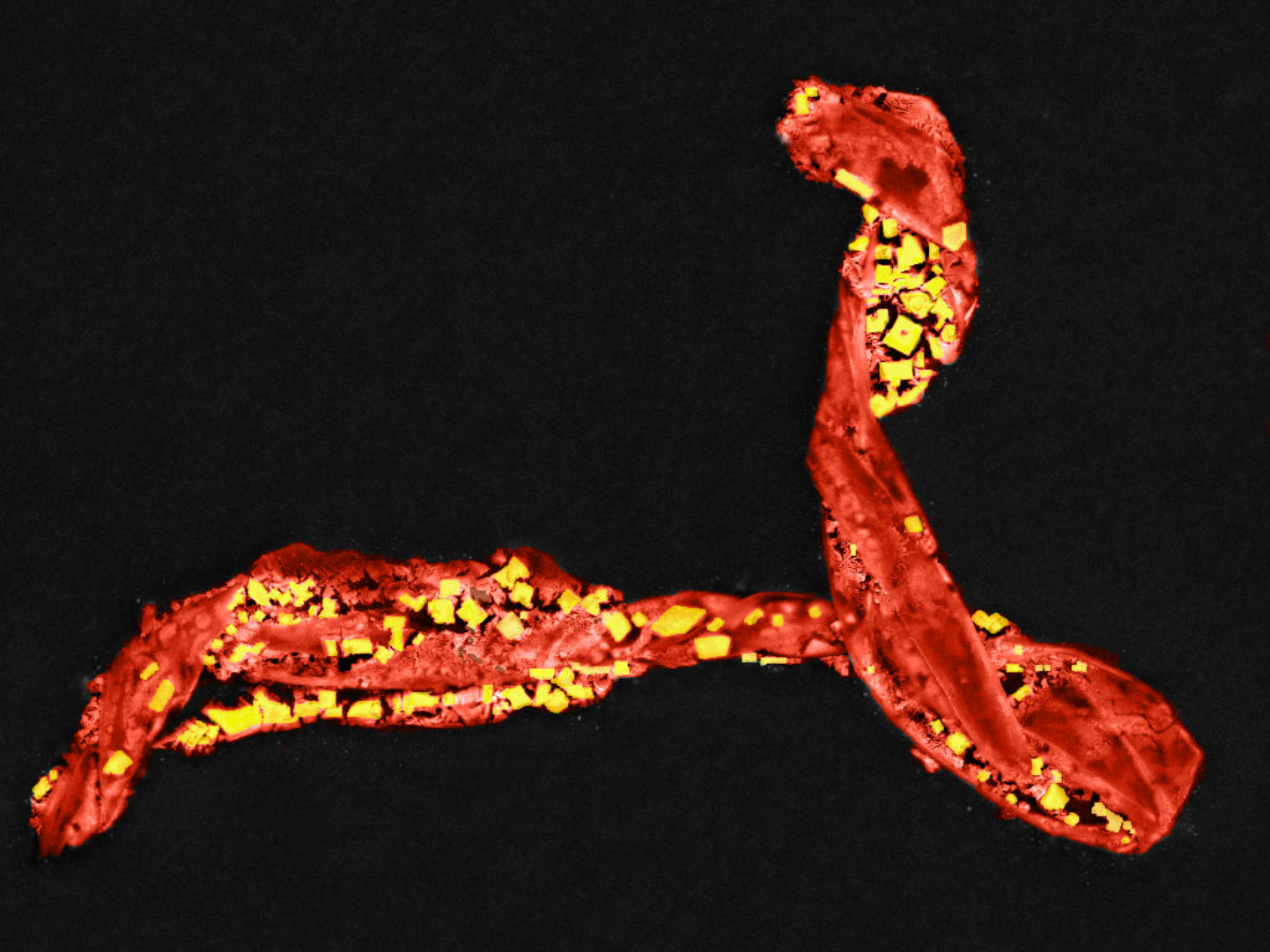
Entry ID #28: Under the Sea
Scott Hollenbeck (Oak Ridge National Laboratory), Darlene McAllister (RJ Lee Group), Kristin Bunker (RJ Lee Group), Gary Casuccio (RJ Lee Group)
SEM image obtained from a UNC Passive Aerosol Sampler in an ORNL laboratory room containing a plasma arc lamp. Image was acquired using a Hitachi S-5500 SEM/STEM. The particles are copper sulfate crystals.
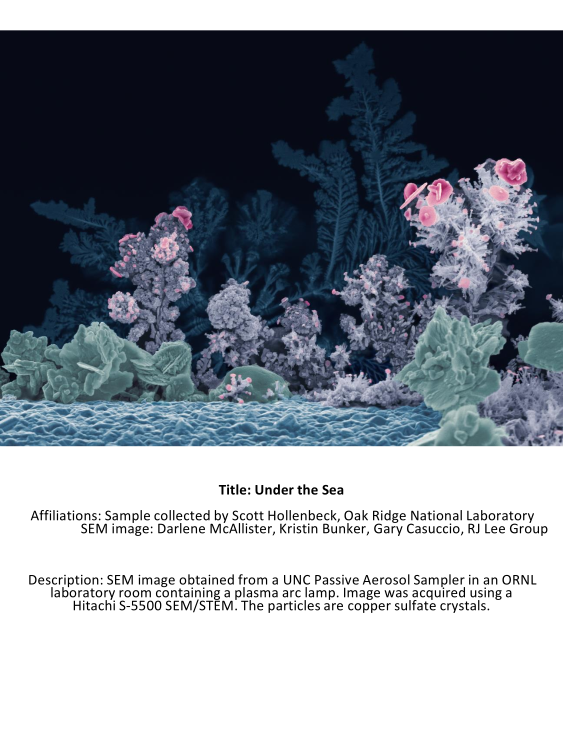
Entry ID #29: From Ashes to Avian
KM Mukut (Marquette University), Abigail Gventer (Marquette University), Somesh Roy (Marquette University)
A phoenix-like beast emerges from a burning soot particle, symbolizing the transformative power of life. The artwork invites contemplation on the cyclical nature of existence and the potential for rebirth from seemingly destructive forces. The creature is created using ControlNet 1.0 and a 3-D reconstructed soot particle extracted from a molecular dynamics simulation.
